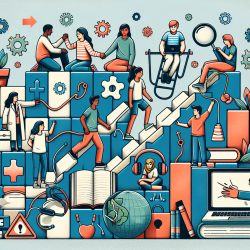Understanding the Drivers of ADM Overuse
The research identifies two primary drivers of ADM overuse in pediatric populations:- Demand for Mental Health and Depression Screening: Despite the lack of substantial evidence, there is a high demand for mental health and depression screening in youth. This has led to an increase in ADM prescriptions without clear benefits.
- Global Mental Health Movement: The push to "scale up" the diagnosis and treatment of mental illnesses globally has resulted in the over-medicalization of distress, contributing to increased ADM use.
Recommendations for Practitioners
To address these issues, practitioners can adopt several strategies:- Advocate for Individualized Assessments: Instead of relying on questionnaire-based screenings, focus on thorough, individualized clinical assessments to determine the best course of action for each child.
- Implement a Stepped Approach: Use a stepped approach to treatment, where psychosocial support and counseling are prioritized before considering ADM. This aligns with a rights-based and social determinants framework.
- Engage in Multidisciplinary Collaboration: Include perspectives from various disciplines such as medical anthropology, sociology, and lived experiences of mental health care system users to offset guild interests and expand current thinking.
- Focus on Socio-Political Context: Address the socio-political factors contributing to emotional distress, such as poverty, inequality, and violence, rather than merely scaling up diagnosis and treatment.
Encouraging Further Research
Practitioners are encouraged to delve deeper into the topic by reviewing the original research paper. This will provide a more comprehensive understanding of the issues and potential solutions.To read the original research paper, please follow this link: Drivers of and Solutions for the Overuse of Antidepressant Medication in Pediatric Populations.










